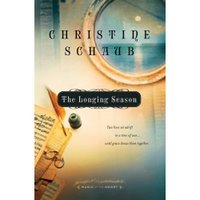Lew Feldstein, co-author along with Harvard professor
Robert Putnam of
Better Together, the follow up book to Putnam's
Bowling Alone, will be speaking in Franklin, Tennesse this week on the topic of building social capital within communities.
Now, I'm all in favor of this. And, if there is a community in America where social capital has been developed, and has potential for developing even further, it's Franklin, Tennessee.
But there's a certain hollowness to the exclusively secular approach to building social capital that Feldstein and Putnam champion. Discouraged by what he saw as the disintegration of American civic activisim that he cataloged in
Bowling Alone, Putnam joined with Feldstein in a tour of the United States to find and write about examples of community based activism that built positive social capital. And they found about a dozen, which they describe in their book. Eight of these examples are listed on their website:
(1) A mentoring and reading program in Philadelphia that brings together retirees and elementary school children to the benefit of both – the children get help reading and the retirees have a richer, more purposeful life
(2) A group of sixth-grade activists in a small Wisconsin town who managed to persuade local authorities to improve safety at a railroad crossing and in doing so learned a valuable lesson in civic activism
(3) A neighborhood in Boston that has been revitalized by a civic association that overcame ethnic differences and now plays an ongoing role in the neighborhood
(4) A community effort in the impoverished Rio Grande Valley, one of the poorest regions in the U.S., that brought such basic services as electricity, roads, and health care to the mostly Spanish-speaking residents(5) A successful small business initiative in Tupelo, Mississippi, that began sixty years ago with the purchase of a prize bull
(6) Chicago public libraries that have broadened their mission and have become true community centers
(7) Two huge and rapidly growing churches in Los Angeles that are making people feel connected to other church members and their community
(8) The city of Portland, Oregon, where the anti-war movement of the sixties actually changed the institutions so that now there is a remarkably high level of civic engagement in government and politics (more so than in other cities, even other cities on the west coast).It's interesting to note that the only faith based example Feldstein and Putnam cite is credited for how it connects church members, but not why these church members are connected.
They also suggest 150 ways to build social capital within a community. Only one of those suggestions is faith related, and it's even couched to a degree.
Suggestion 59. Go to church...or temple...or walk outside with your children–talk to them about why its importantI'm left wondering if their point here is to simply engage in some activity with your children.
There's a problem with the secular approach to building social capital. Sooner or later, the charismatic leaders of the particular community program will die or leave, and the remaining infrastructure may not be strong enough to sustain the effort.
I think a better, more long lasting model of buidling social capital within communities is what I call
individual responsibility within a covenantal community.
What do I mean by a covenantal community ?
I mean a community which is anchored by a group of believing Christians who belong to one or more of the following institutions:
A church
A classical Christian school
There are many mutually re-enforcing covenants within a covenental community. All of these covenants are an extension of the single most important covenant--
The covenant between God and Man.The subordinate coventants of which I speak are those between:
Husband and wife
Fellow believers
Parents and children
Pastor and church members
Teachers and students
 One of the museum's neighbors has complained to the US Department of Agriculture that the museum is not keeping these cats out of trouble. So, in an excellent use our our federal tax dollars, the USDA has launched a federal investigation of the museum. Gum shoed investigators have rented rooms in an adjacent motel, and spend their days videotaping the movement of these 50 cats. Turns out that -- horrors of horrors -- one of the cats scaled the museum wall and went out into the street.
One of the museum's neighbors has complained to the US Department of Agriculture that the museum is not keeping these cats out of trouble. So, in an excellent use our our federal tax dollars, the USDA has launched a federal investigation of the museum. Gum shoed investigators have rented rooms in an adjacent motel, and spend their days videotaping the movement of these 50 cats. Turns out that -- horrors of horrors -- one of the cats scaled the museum wall and went out into the street.








